Last week I published a post with a series of slow-motion videos of me running on a treadmill in different types of footwear (stability shoe to fully barefoot), with a specific goal of looking at if/how my footstrike might change with different types of shoes (or lack thereof). To my surprise, I received a series of very helpful comments on the both the post, and gait mechanics in general, from Ian Adamson, director of product development and education at Newton Running Company. Ian holds a BS in Bio-mechanical engineering and an MS in Sports Medicine, and is featured regularly in the educational videos posted on the Newton website (also on the Newton Channel on YouTube). Not only is Ian an expert on gait analysis and shoe design, but he’s also an extremely accomplished runner and outdoors sportsman – the following paragraph from his personal website describes some of his accompishments:
“Ian is the most successful adventure racer of all time with six world championship wins, 15 world championship podium finishes and 14 international adventure race championship titles. He is a three time and current world record holder for endurance kayaking (262 miles in 24 hours.) Ian has competed internationally in adventure racing, canoeing, kayaking, orienteering and sailing.“
His adventure race victories include the Eco-Challenge, ESPN X-Games, and Primal Quest to name a few, and he currently is an adventure racer and co-captain of Team Nike – he’s obviously spent some quality time on his feet!
Given the helpful feedback that Ian has provided me as I attempt to enter the world of running mechanics research, I asked if he would be willing to answer few questions for the blog regarding footstrike and gait mechanics, and the philosophy of the Newton Running Company regarding these issues. I hope you find this helpful – enjoy!
Me: Why does footstrike (forefoot, midfoot, heel) matter?
IA: Footstrike is an indicator of running form and bio-mechanics. An important component of gait biomechanics for people running in traditional running shoes is the geometry of the shoe, specifically the amount of heel lift. This is the difference between the height of the material under the heel and the height of the material under the ball of the foot.
Heel lift alters the gait biomechanics of a runner by causing the following:
a. The shoe engages the ground too early in the natural gait cycle. This in turn causes:
i. A braking effect and increased shock load to the body because the foot is ahead of the runners center of gravity
ii. Contact with the ground before the leg is properly flexed, leading to increased shock loads (and consequently injury)
b. Initial ground contact with the heel, which is unstable and increases the incidence of ankle and knee injuries
c. Heel contact with the ankle flexed, causing excessive strain on the anterior tibialis, leading to increased rate of shin splints
It is quite possible to run midfoot/forefoot with a lifted shoe, but this requires a plantar flexed foot (my addition – plantar flexed = toes pointing more toward ground) to reach the ground with the foot before the heel hits. Additional problems often occur because of this extended ankle position. It can also lead to people stabbing the ground with the foot ahead of their center of gravity (in front of the body), which also causes braking and additional stress on the metatarsals.
A midfoot or forefoot strike with a marginally or non-lifted shoe allows the runner to load their legs underneath their body in a flexed position. This is typically how kids run, before they are conditioned to running in a heel lifted shoe. For people conditioned to heel striking, it can take some time to regain their natural running form (as in barefoot). [My addition – you can see my son (5yo at the time) running barefoot and doing a midfoot strike in the video below.]
Runners who have never worn a shoe run in this flexed position, with little or no braking component and without heel striking. Even heel strike conditioned runners won’t strike their heels if they take their shoes off, at least they may once or twice but quickly self regulate and learn not to.
5yo Barefoot Running in Grass from Pete Larson on Vimeo.
Slow motion video of my 5yo son running barefoot in the grass. Appears to be midfoot striking most of the time. Video taken with a Casio EX-F1 at 300fps.
Me: Why does Newton view a forefoot strike as optimal?
IA: Newton Running regards midfoot to forefoot as optimal. Basically any gait that is close to natural running as described above. There are four basic human gait types: walk, jog, run, sprint. Most people are jogging and running, where a natural foot strike is midfoot to forefoot. Sprinting is often categorized as toe running, similar to the form described in the Pose method.
Midfoot/forefoot strike allows a runner to maintain a slightly flexed, injury preventive position, which is exactly how one runs barefoot.
Me: What is your opinion on midfoot striking (a flat-footed landing) vs. forefoot striking (under the metatarsal heads on the balls of the feet)?
IA: Both are appropriate for a natural running gait and shifts from midfoot to forefoot occur with increased speed. Inertial forces and wind resistance increases as you run faster, which increases forward lean and moves the strike area forward on the foot.
Me: Available data indicate that most people are heel-strikers. Is it your belief that the presence of extensive heel cushion (i.e., a heel wedge/lift) essentially forces a heel strike in most people?
IA: More accurately the data shows people running in traditional shoes are forced to engage the ground with heel of the shoe. Remove the heel and you remove the heel strike. Professor Daniel E. Lieberman from the Department of Human Evolutionary Biology at Harvard University has been studying running gait in humans and concluded that no one heel strikes naturally. He looked at (among other groups), people who have never worn shoes. Dr. Lieberman’s study should be appear shortly in a major scientific publication.
Me: When getting fitted for shoes, most people focus on pronation only in choosing a shoe. Since people can vary widely in footstrike patterns (forefoot/mid-foot/heel), do you think this should be taken into consideration as well. It seems that a “true” forefoot striker would benefit more from Newton cushioning than that found in a more typical training shoe.
IA: Virtually everyone pronates to some extent, which is entirely natural and why we have big toes and little toes. Unfortunately the shoe industry has mis-educated the running population to believe that pronation is a rear foot biomechanic and should be controlled with the heel of a shoe. This is a fabrication that conveniently sells millions of running shoes with lifted heels. Slap a big heel on a shoe, cause lots of injuries, and sell more shoes with more heel. Very profitable.
Strangely heels were added for performance reasons, nothing to do with motion control. The idea of motion control and stability came after heels were added and it became evident people were getting injured. Dr. George Sheehan (the cardiologist who wrote for Runner’s World) proposed that you could run faster by lengthening the leg, which in theory is correct since running speed = stride length x cadence. Unfortunately by doing so you also change the femur/tibia ratio and cause the problems listed above. The braking effect of the heel strike compensates for any gain in speed, so in practice there is no advantage and many disadvantages.
Me: How do you feel about barefoot running?
IA: I am a believer in barefoot running for several reasons.
a. It forces good running form and body position.
b. Strengthens the tissues and structures in your feet and legs.
c. Makes you more aware of how you run, and consequently a better, more efficient runner.
I ran barefoot through high school (track and cross country), and still kick off my shoes whenever possible.
One of the problems with traditional running shoes is the materials decondition your feet. Consider what happens after you have a cast on your arm (or leg) after a break. The soft tissues waste, most noticeably seen in the muscle. Shoring your foot up in a rigid, beefy shoe is no different, the tissues and eventually the bones loose condition. Walking and running barefoot can arrest and eventually reverse this.
In addition, modern running shoes typically have soft material under the foot. This material quickly deforms and takes on a permanent set. Due to a phenomenon called “skinning”, injection molded and compression molded EVA (the material used for the midsoles of virtually all running shoes), the side walls of an EVA midsole are stronger than the main body. This in turn causes the midsole to quite collapse in the middle, under the metatarsals. Imagine a soft mattress on an old spring bed which has hammocked in the middle. This is what happens to EVA midsoles. The air bags, gel or fluid sacks designed to absorb shock are still there, but the bulk of the material which is EVA collapses. Independent testing shows that this occurs between 25 and 75 miles depending on the shoe. The problem here is that the depression in the middle of the shoe pushes the metatarsals together, compressing the nerves and quite often causing neuroma and sometimes stress fractures.
The foot is designed to spread on contact with the ground, not fall in on itself, which is one reason Newton Running shoes have a bio-mechanical top plate and action-reaction technology. This technology does not take a permanent set like EVA (there is an elastic membrane, protruding rubber lugs, the top plate and encapsulated foam supported by a semi-rigid frame). This also provides enhanced communication with the ground, allowing afferent feedback. All other shoe constructions hinder afferent feedback, causing people to hit the ground to hard as their sensory mechanisms search for the running surface. You hear this when someone runs past with a loud footfall. The noise is a result of the energy dissipation of a heavy foot strike.
25% of the nerves and bones in the entire body are in the forefoot, so it makes no kinematic sense to talk about and design a shoe around the heel (which has a single joint and very few nerves). It does make financial sense if you want to cause injury and then sell shoes that cause the injury to alleviate it!
That’s it for now – I’m hoping to synthesize some of the back-and-forth we had in the comments in my treadmill video post (lots of interesting data!), and put up a second post with more commentary from Ian. I have a pair of Newton Sir Isaac’s that I have been trying out (20 miles so far, two 5-milers and one 10-miler), so I don’t feel comfortable passing any kind of judgment yet, but others speak highly of them (see my other post on Newton’s here). Hope you find this helpful, and we’d love to hear any feedback you might have. In the meantime, here are a few videos featuring Ian that talk a bit about the Newton Running philosophy (Ian is the one on the left in the gray shirt in the first video, orange jacket in second video).
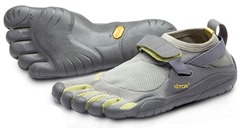
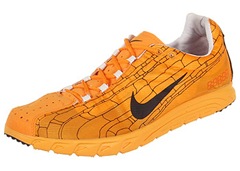
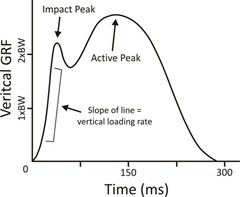
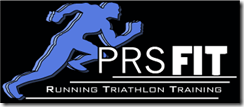
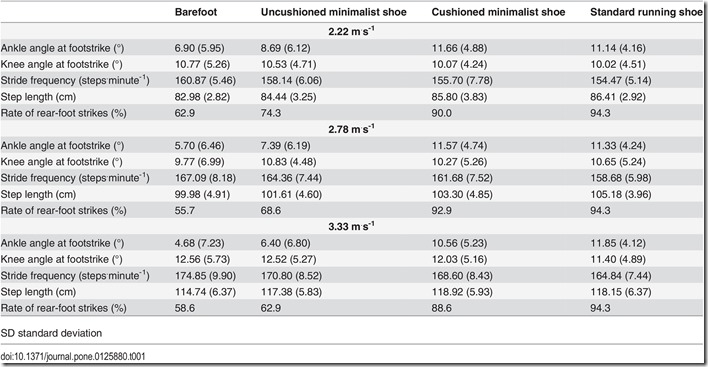














[…] Ian is not only an expert in shoe design but an extremely successful adventure racer with six world championship wins, 15 world championship podium finishes and 14 international adventure race championship titles. He is a three time and current world record holder for endurance kayaking (262 miles in 24 hours.) Additionally Ian has competed internationally in adventure racing, canoeing, kayaking, orienteering and sailing. Ian holds a BS in Bio-mechanical engineering and an MS in Sports Medicine, and is featured regularly in the educational videos posted on the Newton website (also on the Newton Channel on YouTube). You can read a great Q&A session with Ian on runblogger . […]